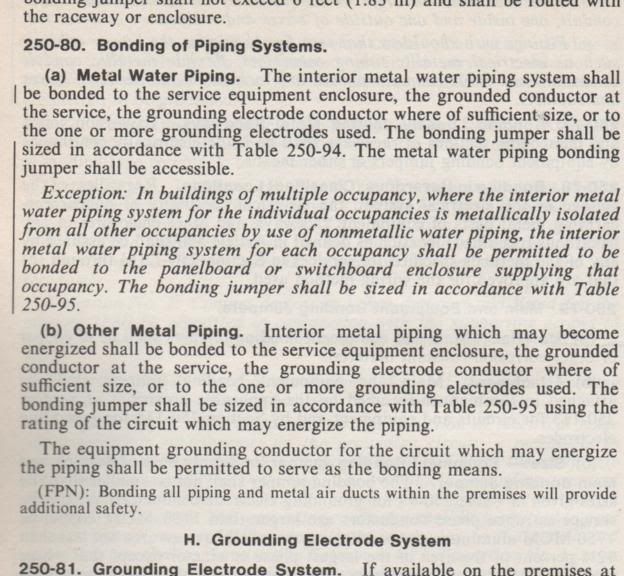Natfuelbilll
Senior Member
Since we are still asking questions at this point...
Given a washbasin or tub with water, a hair dryer or curling iron, and a cord cap inserted into a receptacle, and of slip of the hand.
Why not bond the metallic drain pipes? This would assist in tripping of the short circuit device.
Could lives have been saved?
Given a washbasin or tub with water, a hair dryer or curling iron, and a cord cap inserted into a receptacle, and of slip of the hand.
Why not bond the metallic drain pipes? This would assist in tripping of the short circuit device.
Could lives have been saved?


